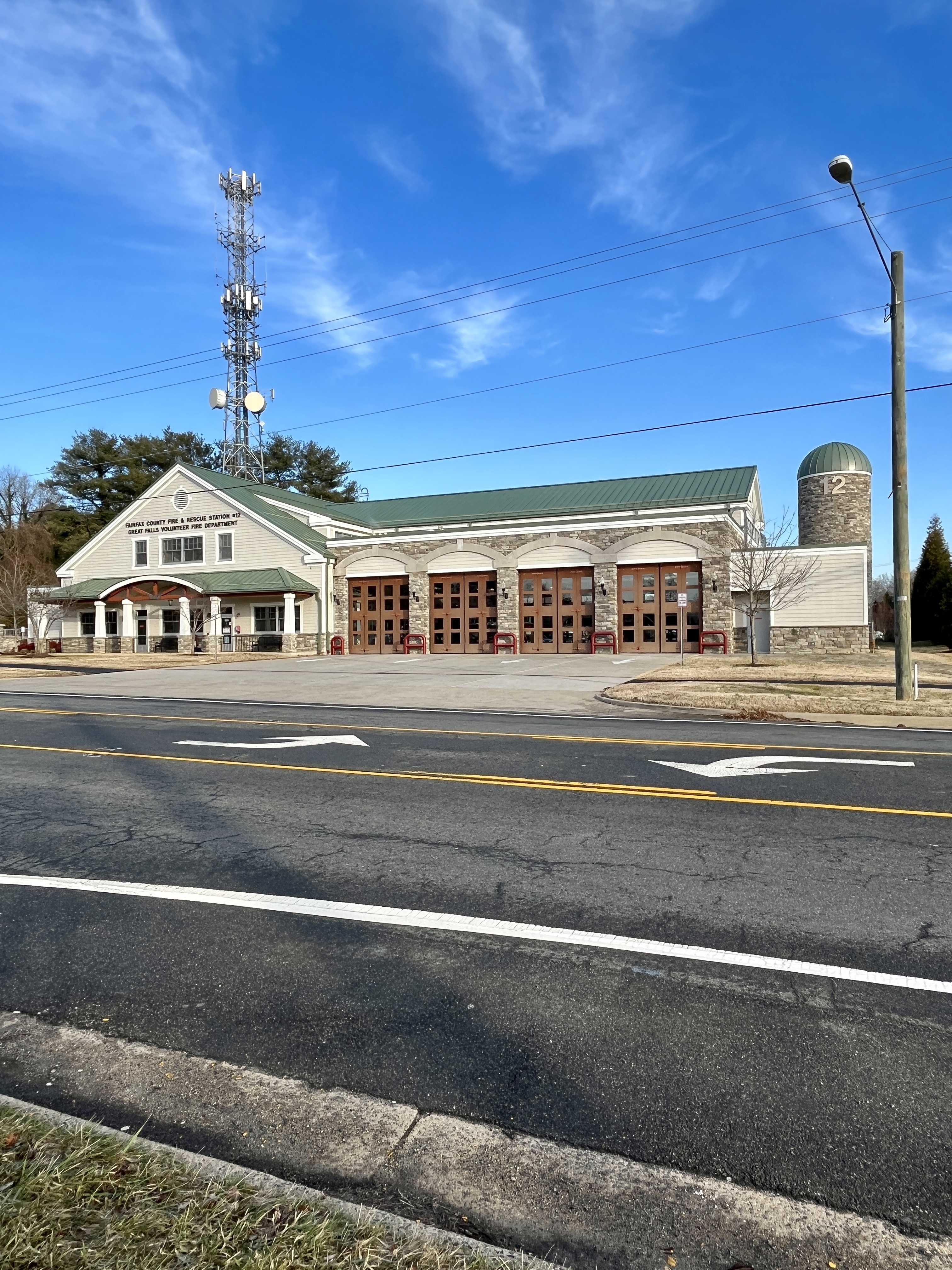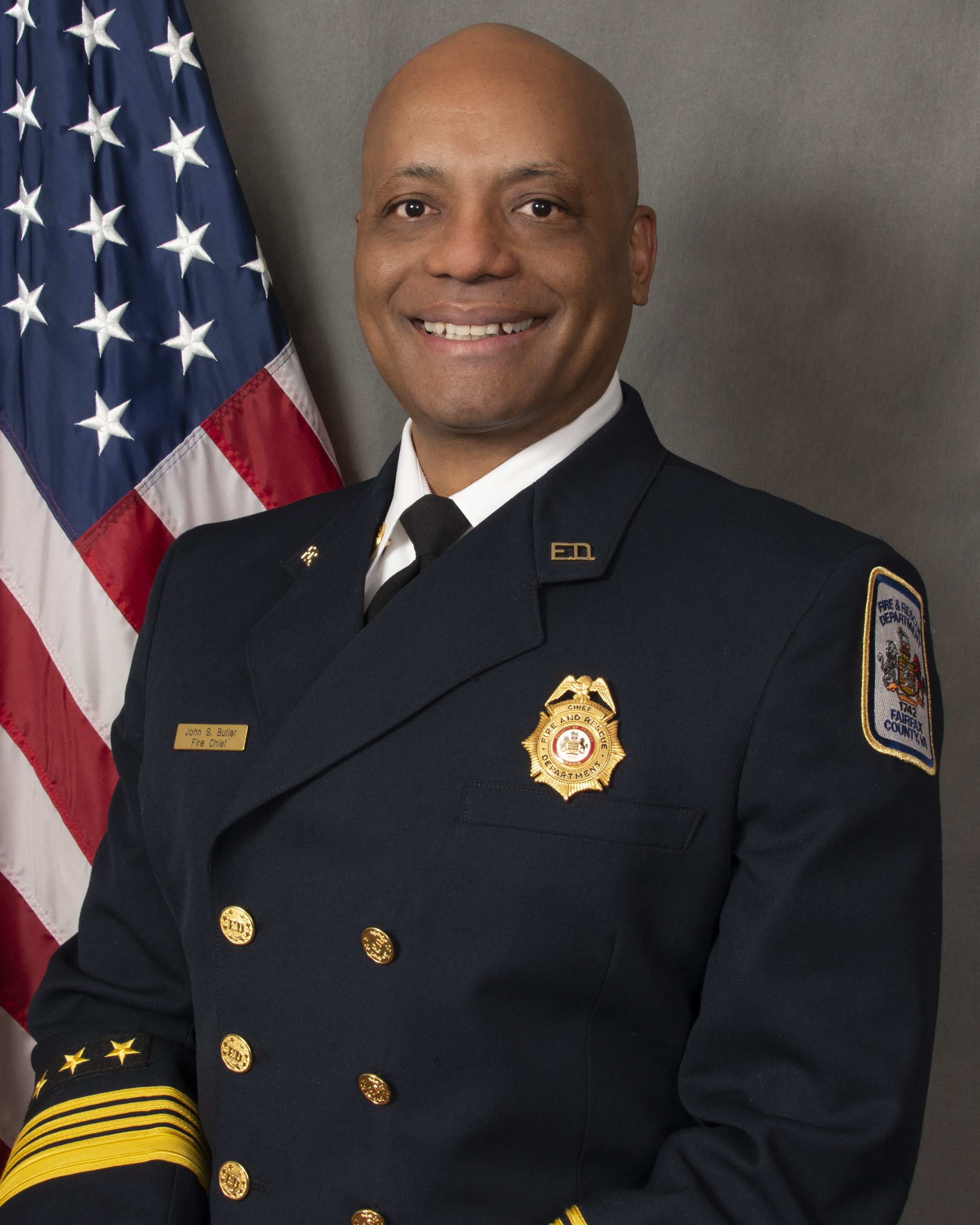 Great Falls, Station 12 in Great Falls
Great Falls, Station 12 in Great Falls
On Feb. 8, Assistant Fire Chief Thomas Arnold said that the county's Fire & Rescue Department does not view any challenges or negative impact on the 12 stations that have converted units. The initial change will be followed by a performance data acquisition and analysis review period.
The twelve fire stations are Annandale 8, Bailey's Crossroads 10, Great Falls 12, Chantilly 15, Clifton 16, Gunston 20, Reston 25, West Springfield 27, Fox Mill 31, Fairfax Center 40, Crosspointe 41, and Scott's Run 44. According to Arnold, the Fire & Rescue Department would operate 43 transport units, 12 Basic Life Support, and 31 Advanced Life Support.
While Great Falls Citizens Association expressed concern about the plan, Supervisor John Foust said, "Chief Butler and his team are very conscientious and provide an excellent level of service to all county residents, including Great Falls residents,” Foust said. “They would not adopt a service model that puts peoples' lives at risk. They have explained the difficulty in recruiting and retaining paramedics and how their plan makes adjustments that will maximize the utilization of the paramedics. I believe that plan will be implemented without adversely impacting the service that is provided.”
The degree of training and certification dictates duties, with Advanced Life Support, paramedic being the highest. Advanced Life Support providers may provide cardiac life support, CPR, endotracheal intubation for airway management, intravenous catheters for medication and fluid administration, and more as pre-hospital emergency medical treatment.
 Fire Chief John Butler, Fairfax County Fire and Rescue
Fire Chief John Butler, Fairfax County Fire and Rescue
Arnold wrote the factors that came into play to determine which stations were the percentage of Advanced Life Support/Basic Life Support dispatches, call volume, and proximity to hospitals. He cited that some averaged less than two hours of utilization per 24-hour shift due to the saturation of Advanced Life Support equipped transport units. Using a variety of data points and an equity lens avoided disproportionately impacting certain county areas more than others.
The Fire & Rescue Department's former all Advanced Life Support system prioritized having an Advanced Life Support provider, a trained paramedic, on all transport units. However, he added, "This move requires the abundant availability of Advanced Life Support providers and comes with associated personnel, equipment, and training costs." When the Fire & Rescue Department implemented the current staffing model in 2015, it was determined that the county needed to hire 48 new paramedics each year to meet the target goal of Advanced Life Support providers and account for attrition. But the Fire & Rescue Department has averaged only 20 new Advanced Life Support providers per year over the last eight years, accounting for 43 percent of the target goal.
The loss of Advanced Life Support providers and not being able to replace them left the Fire & Rescue Department to depend on staff overtime and the use of "dual-hatters," Advanced Life Support providers who served in two roles at the same time — as an Advanced Life Support provider and an apparatus driver, or as an Advanced Life Support provider and a unit officer. Conflict may arise when both tasks are vital and time is of the essence.
Although the Fire & Rescue Department relied on using dual hatters for over ten years, which helped bridge staffing challenges, it proved less than ideal due to the issues presented, according to Arnold. When dual hatters have other primary responsibilities, their skills degrade when assigned to stations with lower call volumes. "Over time, this may adversely impact patient care," Arnold said.
Arnold added that the overall impact of the change on staffing needs would be a decrease in Advanced Life Support providers per day and an increase in Basic Life Support providers per day. The transition would be permanent and not part of the staffing adjustments made in early January due to the rise in COVID cases among staff.
As for procedures, EMTs can perform, Arnold wrote, "The potential skills at which our EMTs can perform has increased over the last several years as the Virginia Office of Emergency Medical Services (VAOEMS) adds skills to the EMT scope of practice." These include administering oral glucose, Epi Rite, baby aspirin for chest pain, iGel airway insertion, tourniquet use, and hemostatic gauze for wound packing. "Working with our Operational Medical Director, the Fire & Rescue Department has added skills to the EMT. This increased skill set will allow EMTs to perform skills that previously could only be completed by an ALS provider," he said. Skills that will be implemented soon, according to Arnold, are administering oral ondansetron for nausea/vomiting, acetaminophen/ ibuprofen for pain, and other procedures.
Proposed unit reductions formally came to light on Jan. 11, during the Board of Supervisors Public Safety Committee Meeting. According to Fire Chief Butler, it was a question of balancing reduced staffing and health and safety department staff with service to the community.
"We're working through some challenging times as you've seen and heard me talk about," Butler said, referring to, among other things, vacancies, COVID cases, and attrition.
"We estimated we would have around 90 vacancies today (as of Jan. 1, 2022), but we're currently at 105 with the two recruit schools in session. ... Then omicron happened, and that took up a lot of the gains we had achieved from the new graduating classes and wiped those gains out … causing our vacancies to spike," Butler said.
There is a concern for the health and safety of the Fire & Rescue Department providers and frontline responders.
"Some have been working 60 consecutive hours at a time. This poses a risk to them at work and commuting to and from their homes to their families, the fatigue factor," Butler said. "So, we're here to provide the highest quality service to our community and balance staffing." The Fire & Rescue Department has a reported 1,260 career staff.
